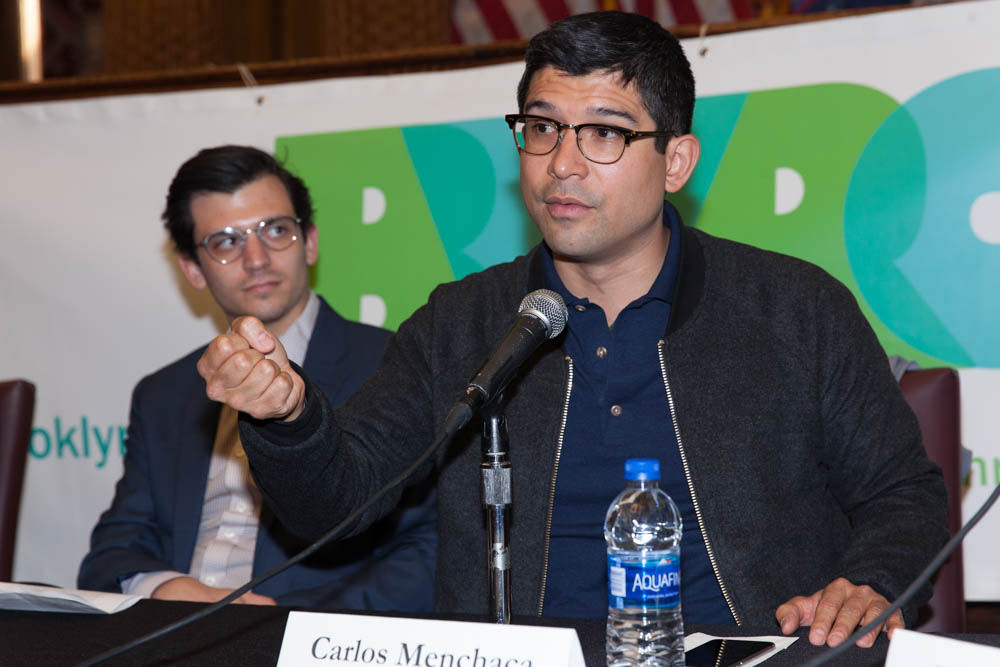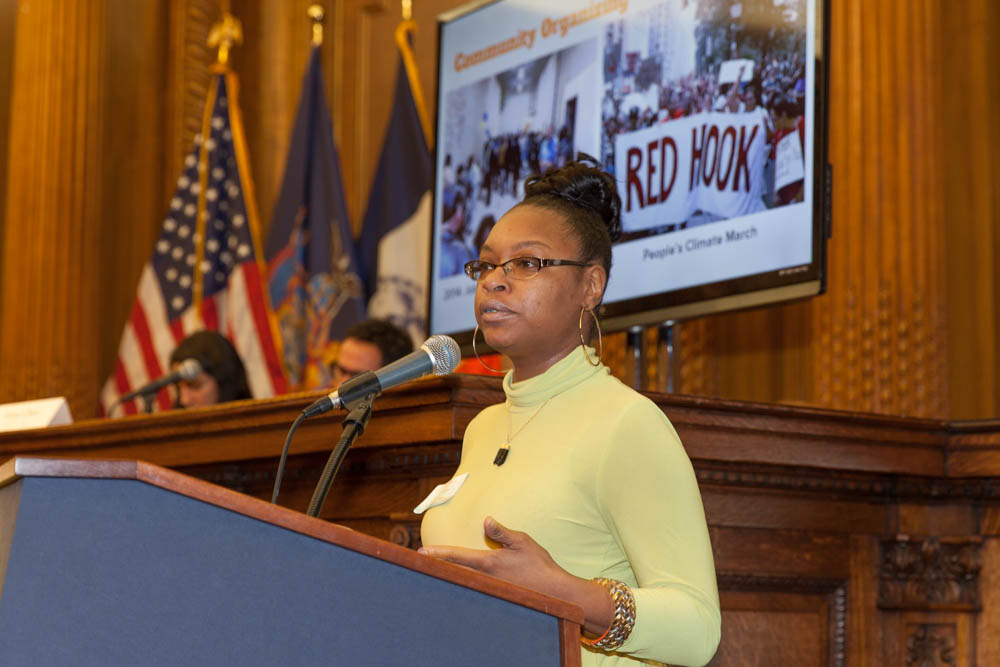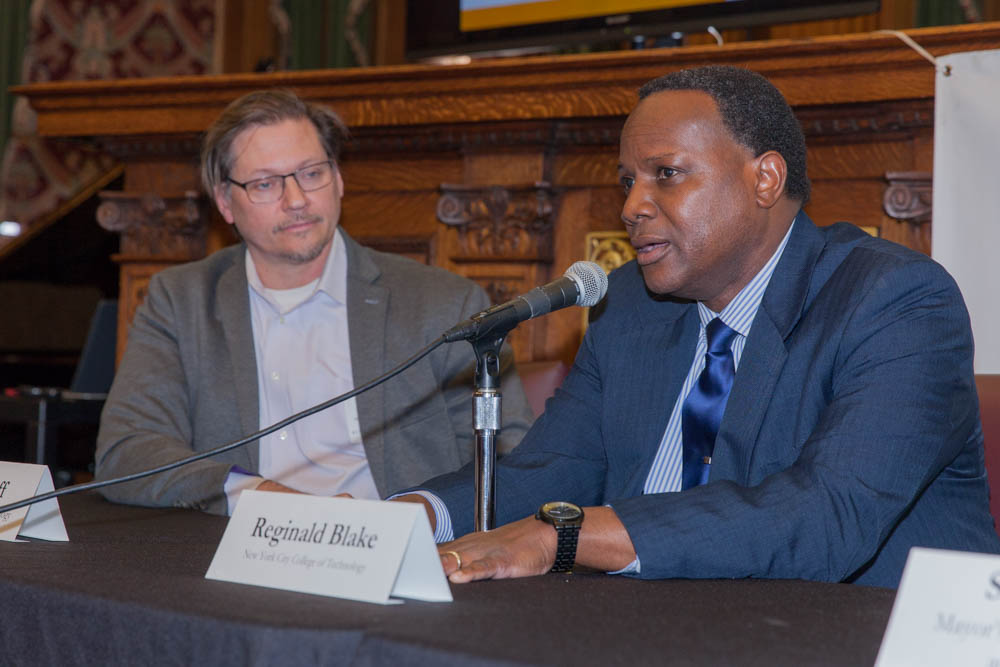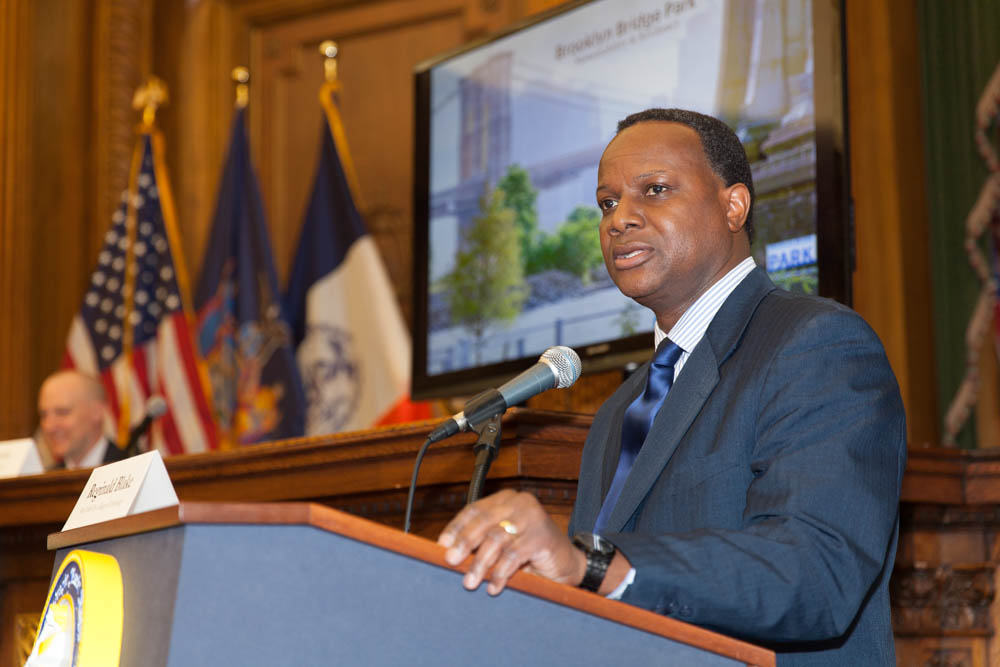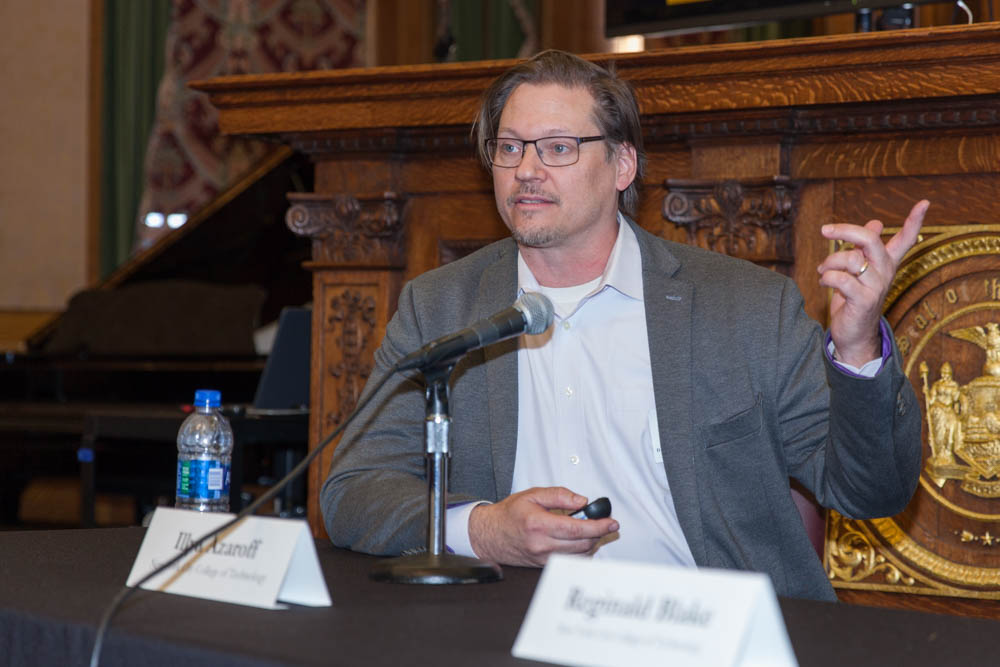BWRC hosted Brooklyn Waters, its seventh conference at Borough Hall on April 20th, 2018. Titled Brooklyn Waters, the conference focused on the complex, interconnected issues of sea level rise, sustainability, and resilience along Brooklyn’s waterfront. BWRC was thrilled to host a sold-out event, with over 185 urban planners, government leaders, community advocates, and scholars registered.
The gathering kicked off with featured speakers who spoke about the Brooklyn waterfront’s history, climate science, and current urban planning initiatives. Julia Golia, Director of Public History at the Brooklyn Historical Society, outlined the history of Brooklyn’s working waterfront, providing much needed context on the development and transformation happening along the shoreline in Kings County. Cynthia Rosenzweig, Senior Research Scientist at NASA Goddard Institute for Space Studies, provided pertinent information on the current climate science behind sea level rise affecting New York. Closing out the morning’s framing conversation was Michael Marrella, Director of Waterfront and Open Space Planning at the NYC Department of City Planning.
The first full panel, moderated by City Tech professor Benjamin Shepard, explored civic, government, and design response to sea-level rise and storm surge. The first panel featured advocacy leaders, Caroline Nagy from the Center for NYC Neighborhoods and Kate Boicourt from the Waterfront Alliance. Tevina Willis, Local Leaders Facilitator with the Red Hook Initiative, walked the audience through grassroots resiliency efforts in Red Hook. Similarly, architect Eran Chen explained that his firm (ODA New York) prioritizes resiliency design efforts in more large-scale projects along the Brooklyn waterfront. Another waterfront powerhouse, the Brooklyn Navy Yard Development Corporation, joined the conversation; Executive Vice President Clare Newman explained that the Navy Yard’s resiliency plan promises continued sustainable growth alongside steady job creation.
After lunch, conference participants got a closer look at Brooklyn’s ‘soft edges,’ with an emphasis on Brooklyn Bridge Park and Jamaica Bay. Moderated by City Tech professor Reginald Blake moderated the panel that offered critical perspectives on both natural and built ‘soft edges.’ Executive Vice President of Brooklyn Bridge Park, David Lowin, explored the ways that a recreational edge environment prepares its infrastructure for rising tides and storm surge. Next, leaders from advocacy, research, and government organizations shared critical views on the role that Jamaica Bay plays in maintaining Brooklyn’s resilient edges. Adam Parris, Executive Director of the Science and Resilience Institute at Jamaica Bay, was joined by John McLaughlin, from NYC DEP’s Office of Ecosystem Services, Green Infrastructure, and Research. To close out the session, Lauren Cosgrove of National Parks Conservation Association discussed the vitality and critical ecological role played by Gateway National Recreation Area.
In the final session of the conference, Roland Lewis, President of the Waterfront Alliance, moderated a round table discussion on the future of resilience efforts in New York and beyond. Council Member Carlos Menchaca joined the panel, imploring the audience to integrate political activism into all resiliency efforts. Alongside Menchaca were panelists Sam Hersh, of Mayor’s Office of Recovery and Resiliency and City Tech professors, Reginald Blake and Illya Azaroff.
The day’s discussion and debate closed with a few words from BWRC Director, Richard Hanley, who gave a sneak peak of the 2019 conference topic: the contested issue of housing along Brooklyn’s waterfront. BWRC is thankful to all the panelists and moderators who joined us for an action-oriented day. Finally, many thanks to Robin Michals for so generously photographing the conference.

